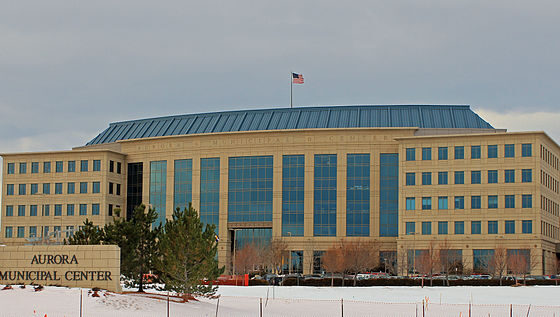This article is part four of a seven-part series that focuses on how sustainability impacts students on a college campus. This series will go in-depth on topics that intersect with sustainability, such as energy use, food waste, environmental racism, recycling, compost and more.
Solar panels, cross-laminated timber, planted green roofs and LEED certification are terms that are all visible and active today on DU’s campus. These installments can be seen in use in DU’s three new buildings: the Burwell Center for Career Achievement, Dimond Family Residential Village (DFRV) and the Community Commons. All of which have received attention around Colorado and nationwide.
James Rosner, the associate vice chancellor and member of the facilities planning and management team at DU, works closely on the new buildings popping up around campus.
Rosner emphasized that DU had a target for LEED certification when designing the new buildings. LEED stands for Leadership in Energy and Environmental Design.
A building obtains a LEED certification based on several categories like the use of green materials, energy-efficient systems, water-efficiency features and access to public or bicycle transportation. The certification is based on a number of points received, which depends on how innovative and sustainable the categories are. The LEED silver buildings score between 50-59 points. LEED gold ranges between 60-79 points. A LEED platinum score is 80 points and above.
“The initial goal for the buildings was to achieve LEED Silver. DU has focused on LEED certification for most buildings built since 2000,” Rosner said. DU’s Law School was the first in the state to achieve a LEED gold certification.
DU exceeded their initial goal, as all of the new buildings are on track to achieve the next level of certification as they receive more points.
“The Community Commons is on track for LEED silver with a green roof, low flow fixtures, plug controls for energy savings, LED lighting and an air displacement ventilation system,” Rosner said.
Similarly, DFRV is “on track for LEED gold with rooftop solar, low flow fixtures, a 4-pipe HVAC system, on-demand hot water, LED lighting and sub-metering for tracking building usage,” Rosner said.
So far, the Burwell Center for Career Achievement is the most sustainable building on campus. This building is DU’s first LEED platinum certification and the “first Mass-Timber building that has a VRF HVAC system, ventilation, rooftop solar, low flow fixture and is all-electric by not using fossil fuels for heating or water,” according to Rosner. A Mass-Timber building means the elevator and stair cores are wood and not concrete.
“The Burwell Center incorporates the solar [panels] as part of the roof,” Rosner said.
A VRF HVAC system is a variable refrigerant flow that is a large-scale ductless system and can perform at a higher and more sustainable capacity. This is more energy-efficient as it has minimal impact on the building’s infrastructure.
The new buildings total around 300,000 square feet, and their construction increases DU’s carbon footprint. But, in the long run, the sustainable features will not hinder the university’s carbon footprint, as it takes less energy to operate these buildings than a building with no sustainable and energy-efficient features.
The construction of sustainable buildings has become a priority in universities around the nation. Colorado State University in Fort Collins has recently started a redevelopment and housing project called the Hughes project. The buildings are hooked up to solar energy and water-saving technology, and access to already-existing open spaces is a main priority for the developers.
Cody Cooke, contributing writer for the opinion desk of the Collegian at CSU in Fort Collins, said, “this kind of development will create some problems in the future because the Hughes site is advantageous, as it is connected to already-existing energy infrastructure in ways that future development sites might not be. With the prospect of a booming population and their housing needs in Northern Colorado, this should be on our radars.”
The three buildings at DU were “intentionally designed to have the lowest carbon footprint and to be the first buildings on campus that have a green room and rooftop solar-designed with the building,” Rosner said.
Similarly, LEED-certified buildings are popping up all around Boulder’s campus. There are 11 LEED platinum, 16 LEED gold and one LEED silver building.
Ed Von Bleichert is in charge of the facilities management sustainability center and committed to achieving a fully green campus at Boulder. This initiative started because of students who demanded the campus be renovated and LEED-certified. This movement towards sustainable buildings is becoming more common and prioritized.
One factor that may go overlooked is the diverse crew of contractors used in the construction of the new buildings. At the beginning of the Denver Advantage Projects, DU did not prioritize a diverse business program, policy or goal for capital projects or construction.
The Denver Advantage Projects is a 20-year plan that started in 2018, and it hopes to evolve the DU community and improve the student experience. The plan began with the construction of the three new buildings meant to connect the community.
Katherine Archuleta joined the construction and contracting team to ensure the project incorporated the work of minorities, women, veterans and small businesses. This encouraged DU to hire a diverse crew of general contractors in 2018.
DU placed a heavy emphasis on “outreach events by hosting several on campus and going out to different groups in the Denver community to show how serious we were on this effort,” Rosner said.
In May of 2018, the facilities planning and management team hosted a subcontractor event on campus to encourage diversity. In September of 2018, they presented at a Black and Hispanic construction contractors meeting.
These outreach events were well attended, which provided DU with valuable information on how they can move forward with diversity and inclusion when constructing new buildings. This helped DU analyze “what the cost premium was to use diverse businesses,” as according to Rosner, “there can be an impact to budgets when diverse businesses who might not have been the low bid are awarded. Luckily, this was not the case for the DA projects and on BCCA.”
DU’s construction team is making enormous strides towards achieving LEED certification around campus and increasing the diversity of the construction workers and contractors.
“The buildings have been really fun to work on, and we are excited that we were able to complete them on time and through COVID,” Rosner said.
As you walk around campus, take a look inside these new buildings. View the sustainable structure that architects at DU have devoted their time into, making not only DU but the environment a cleaner and healthier place to live in.











